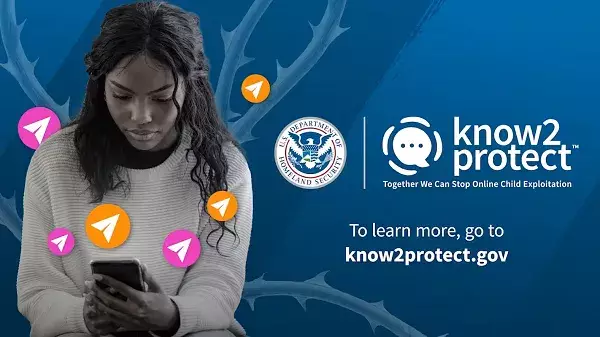In an era where technology permeates every aspect of our lives, safeguarding young users from online exploitation has surfaced as a paramount concern. Snapchat’s involvement in the U.S. Department of Homeland Security’s “Know2Protect” initiative showcases its commitment to addressing the disturbing rise of child sexual exploitation and abuse (CSEA) on digital platforms. Launched in April of last year, this program aims to enlighten younger demographics about the threats they may encounter online and the resources available to report and combat such abuses. As a founding participant, Snapchat has harnessed its platform to introduce significant changes and educational campaigns aimed at mitigating these dangers.
Awareness Levels and User Insights
Recent research conducted by Snap offers a crucial glimpse into teens’ experiences with online interactions. Alarmingly, the findings revealed that 24% of surveyed teens admitted to sharing intimate imagery, reflecting no change from the previous year. Meanwhile, 33% reported instances of online grooming—a slight decrease—showcasing that while some progress is being made, the battle is far from over. Perhaps the most haunting statistic is that 61% of youths shared intimate images exclusively with individuals they knew or had met online. This fact raises questions about trust and the vulnerability inherent in digital communication.
The aspect of being “catfished,” where individuals pose as someone else online, remains prevalent as well, with 35% indicating they had fallen victim to this deceptive practice. Interestingly, there was a notable increase in concerns surrounding catfishing, up four percentage points since the previous year. The accompanying realization that a significant portion of content shared by teenagers slips from their control—particularly disheartening as 63% of teens who shared intimate content admitted losing control—drives home the severity of the issue at hand.
Shifting Attitudes and Growing Awareness
While it might seem that the figures from Snap’s research paint a grim picture, light can be found in the growing awareness around the Know2Protect campaign itself. A significant 28% of respondents now recognize the initiative, which marks a considerable uptick in familiarity. Being able to describe elements of the campaign has increased to 46%, deeming successful outreach effective. This is a promising indication that as initiatives raise awareness, young people are increasingly seeking out tools and knowledge regarding online safety—a crucial step towards prevention and education.
Furthermore, the desire for enhanced awareness is palpable, as 89% of informed youngsters reported looking for more information on online safety matters. This robust interest suggests that Snapchat’s efforts and the Know2Protect initiative not only raise consciousness but also motivate proactive steps towards protection against exploitation.
Technological Safeguards and Future Challenges
Snapchat’s implementation of technologies like PhotoDNA and Google’s CSAI Match signifies a proactive stance against sharing illegal images and videos. As the internet landscape continues to evolve with the integration of AI and deepfake technologies, challenges will undoubtedly grow in complexity. This advancing technology can amplify the very issues that Snap and other platforms are striving to address, making it imperative that they continuously enhance their protective measures.
The introduction of in-app alerts to warn users about potentially dangerous friend requests exemplifies Snapchat’s intention to ensure a safer engagement environment for its younger audience. These functionalities, alongside the Family Center tool enhancements, are all integral parts of a broader strategy to empower youth while safeguarding them against digital threats.
Despite the ongoing challenges presented by online exploitation and abuse, Snap’s commitment to raising awareness and implementing protective features showcases a progressive approach to safeguarding its users. The dual effort of education and technology indicates that while obstacles persist, there remains substantial hope for a more secure online experience for young individuals navigating the digital landscape.

